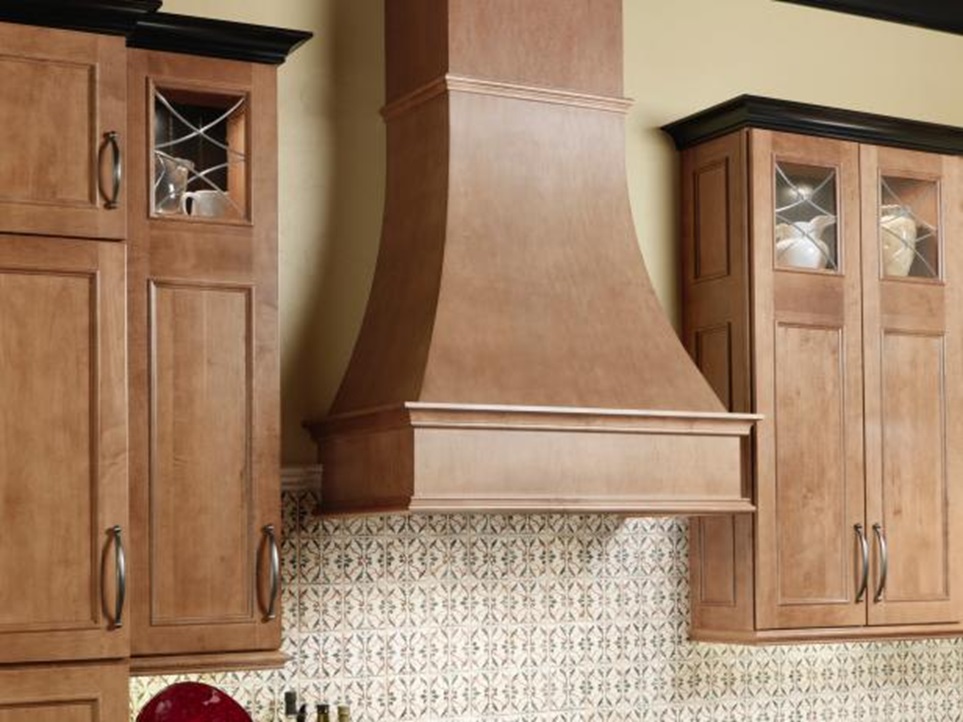
When selecting a vent hood for your kitchen remodel, it’s crucial to prioritize both size and strength.
According to Brian Wellnitz, marketing manager for Broan-NuTone, a leading manufacturer of ventilation products, quality and strength are paramount considerations. He emphasizes that cooking at home is the primary source of airborne pollutants in households. Therefore, vent hoods play a critical role in capturing smoke, odors, humidity, and heat directly at the source before they spread throughout the house.
Considerations When Choosing a Ventilation Hood
- Local Standards: Assess typical upgrades found in homes within your area.
- Budget: Determine your financial constraints for the purchase and installation.
- Vent Type: Decide on the preferred ventilation system that suits your kitchen layout and needs.
- Desired Features: Consider specific functionalities or enhancements you wish to have in your ventilation hood.
Ducted vs. Non-Ducted Hoods. The decision between a ducted and non-ducted vent hood typically depends on factors such as kitchen layout, range style, and budget. A ducted vent hood ideally expels smoke, odor, humidity, and heat outside the house, while a non-ducted hood filters and recirculates air back into the kitchen.
Although non-ducted hoods can effectively eliminate grease and odor with proper maintenance, they do not extract heat and humidity from the home.
Size and Strength. Vent hoods, whether ducted or non-ducted, should be appropriately sized to match the requirements of the kitchen. A properly sized hood must cover the full width of the range and at least 50 percent of the front burners.
The strength of a vent hood is measured in CFMs (cubic feet per minute), indicating the amount of air it moves. The Home Ventilating Institute (HVI) suggests a minimum of 40 CFM per linear foot of range. For gas cooktops, it’s recommended to have 1 CFM per 100 BTUs (british thermal units) of burner power. It’s advisable to choose products certified by HVI for quality assurance.
Types of Vent Hoods
Under-cabinet: Considered the budget-friendly option, non-ducted under-cabinet hoods start at around $50. These basic units recirculate air back into the kitchen, capturing grease and odors in replaceable filters. Their performance significantly improves when ducted outdoors, with ducted models ranging from $175 to $250, excluding installation.
Wall-mounted chimney: Falling into the mid-range category, these vent hoods blend style and functionality at a moderate price. Installed against the kitchen wall, they feature a pyramid base with a rising rectangular column, resembling a home chimney. Prices typically range from $500 to $700, excluding installation.
Ceiling-mounted chimney: Also known as island hoods, these upscale models hang from the ceiling over the kitchen’s cooking island. Available in various styles, including sleek European glass and chunky pro-style stainless, prices range from $1,200 to $2,500, excluding installation. Custom units offer limitless possibilities but come with varying price tags.
Custom built-in: These ventilation systems seamlessly integrate with the kitchen cabinetry, with power packs or modules mounted and ducted discreetly into the wall. Prices vary depending on the specific application and customization requirements.
Features
In general, as prices increase within product categories, performance tends to improve, operation becomes quieter, and controls transition from mechanical to electronic.
Basic under-cabinet units typically offer manual on-off switches and perhaps a two-speed fan, while higher-end models feature digital controls with variable-speed fans. Some advanced units even incorporate sensors for heat and particulate detection, automatically activating the blower as needed.
With increasing price points, ventilation hoods also tend to feature better and brighter lighting. Lighting options typically progress from incandescent to halogen, and in Energy Star approved models, fluorescent lighting is common. The next advancement in lighting technology is expected to be LED.




